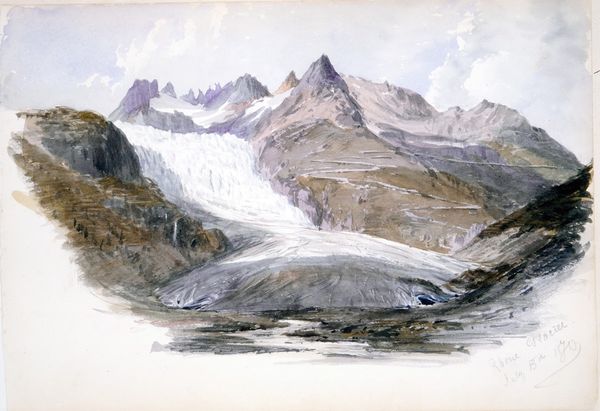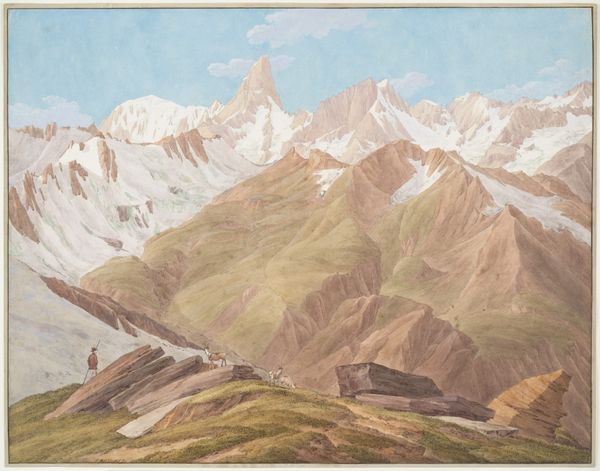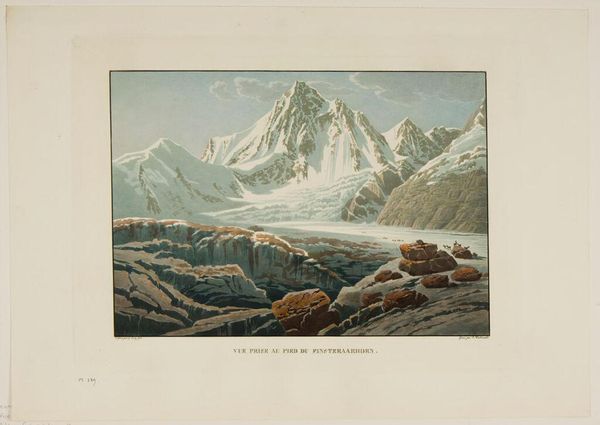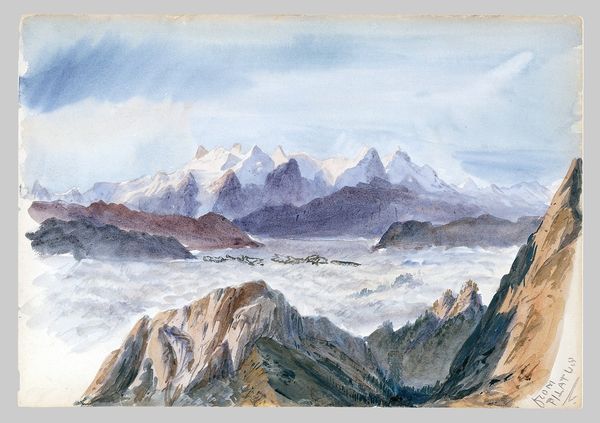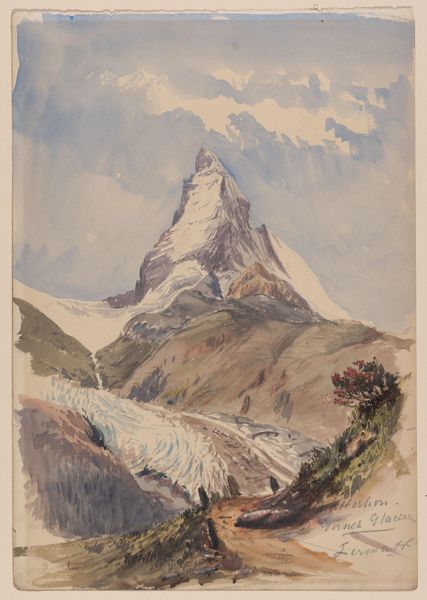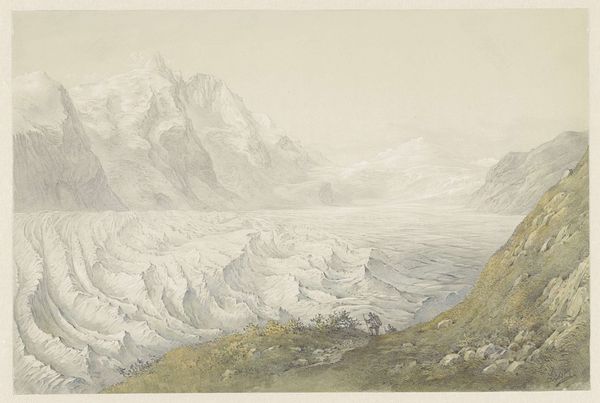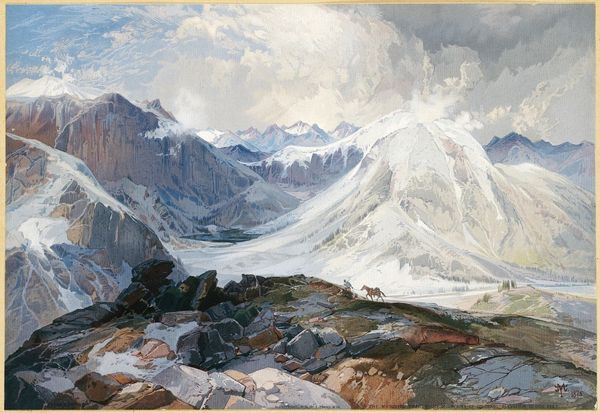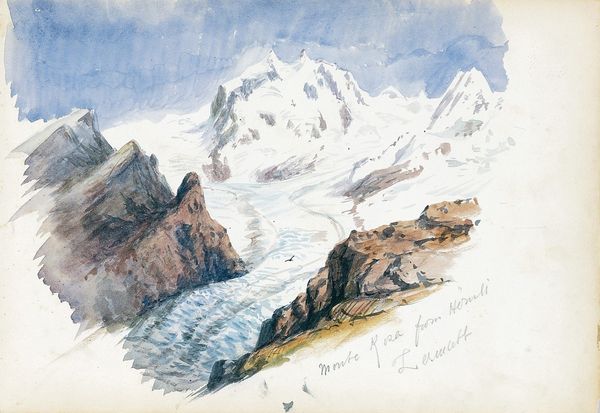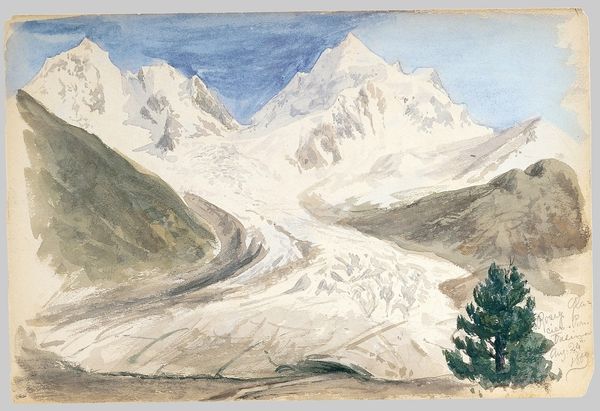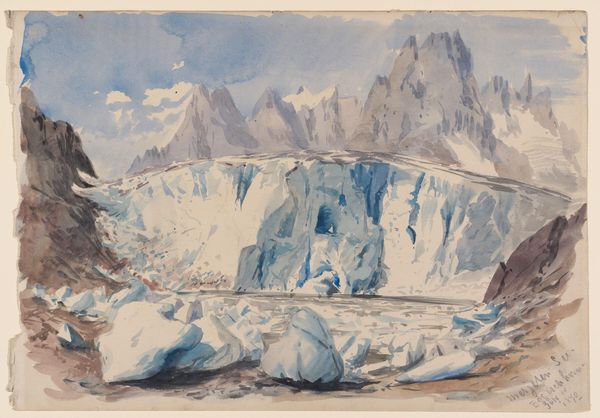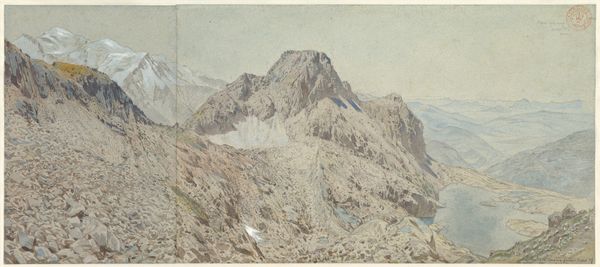
Copyright: Public Domain: Artvee
John Singer Sargent painted "Schreckhorn, Eismeer" with watercolor in the late 19th or early 20th century. This painting reflects an important moment in the history of landscape art, when the sublime, previously sought in romantic representations of nature, was being reconsidered through the lens of scientific observation. Here, the artist captures the stark beauty of the Swiss Alps, a region increasingly accessible to tourists and artists thanks to advancements in transportation. The painting shows how a specific cultural and economic context—the rise of leisure travel among the European upper classes—influenced artistic production. Sargent's choice of watercolor, a medium often associated with plein air painting, emphasizes his direct engagement with the landscape. To fully understand such a painting, we look at the historical context, examining travel guides, scientific reports, and other documentary evidence. This can reveal the complex interplay between art, science, and society, and how artists like Sargent shaped our perception of the natural world.
Comments
No comments
Be the first to comment and join the conversation on the ultimate creative platform.
